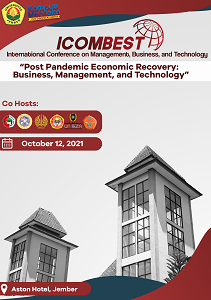FORMULATION AND OPTIMIZATION OF CARBOPOL AND ETHYL CELLULOSE AS FLOATING-MUCOADHESIVE SYSTEM OF DILTIAZEM HYDROCHLORIDE TABLET BY FACTORIAL DESIGN
Abstract
Hypertension is a degenerative disease that eachyear has increased the number of patients. Number
of patients in Indonesia is estimated at 15 million
people. Nearly 50% of patients suffering from
hypertension are not aware that tends to be severe
hypertension (Syahrini et al., 2012).
Diltiazem Hydrochloride (HCl) is an antihypertensive
drug used 3-4 times a day with doses of 30-60 mg
(UBM Medica, 2012). Diltiazem HCl has a half life of
3-5 hours (Sweetman, 2009) with the main
absorption area in the upper stomach (Kapil et al.,
2012) that can be formulated into sustained release
dosage gastro retentive system.
The system created is a combination of floatingmucoadhesive.
The combination of these systems is
expected to overcome the shortcomings of the
system when used alone. Floating system floats over
the surface of gastric contents when the stomach is
full but at the time stomach is emptied and the
tablet reaches the pylorus the bouyancy of the
dosage may be decreased. If the stomach is full,
mucodhesive dosage form not properly adheres may
be passage the pylorus due to peristaltic
movements of the stomach (Gaykar et al., 2013).
Polymer is one of the essential ingredients to
produce a floating-mucoadhesive system that meets
the requirements. The polymer used is a
combination of Carbopol and ethyl cellulose. The
combination of hydrophilic and hydrophobic
polymers proved able to control the rate of drug
release with high solubility (Nanjwade et al., 2011).
Published
2017-01-27
How to Cite
IRAWAN, Eka Deddy; SARI, Lusia Oktora Ruma Kumala; PRASETYO, Andreas Henry.
FORMULATION AND OPTIMIZATION OF CARBOPOL AND ETHYL CELLULOSE AS FLOATING-MUCOADHESIVE SYSTEM OF DILTIAZEM HYDROCHLORIDE TABLET BY FACTORIAL DESIGN.
UNEJ e-Proceeding, [S.l.], p. 92-95, jan. 2017.
Available at: <https://jurnal.unej.ac.id/index.php/prosiding/article/view/3900>. Date accessed: 22 dec. 2024.
Section
General









